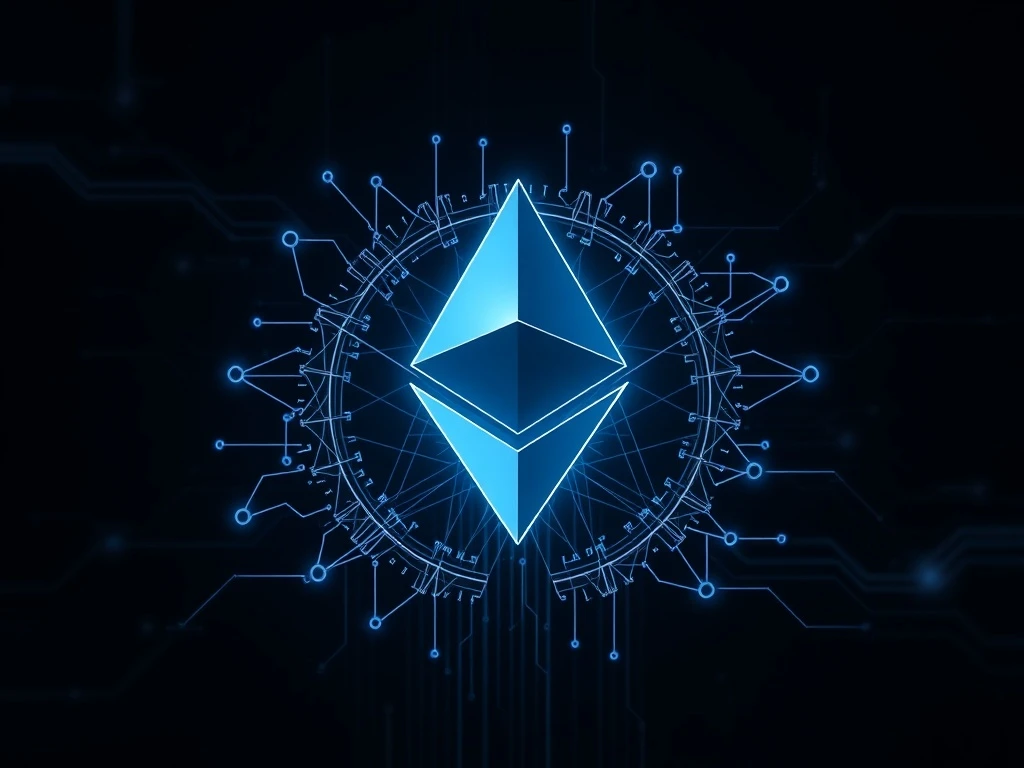Ethereum’s Revolutionary ‘Lean Ethereum’ Plan for a Quantum-Resistant Future

The digital world is constantly evolving, and with the advent of quantum computing, the very foundations of blockchain security are being re-evaluated. Ethereum, a cornerstone of decentralized finance, is not standing still. A groundbreaking proposal for ‘Lean Ethereum’ aims to prepare the network for this future, making it faster, more secure, and ready for the quantum era.
What is ‘Lean Ethereum’ and Why Does it Matter?
Ethereum Foundation researcher Justin Drake has unveiled a significant proposal: ‘Lean Ethereum.’ This initiative seeks to address two critical challenges facing the layer-1 smart contract network: achieving quantum resistance and simplifying Ethereum’s intricate technical architecture. The current tech stack, encompassing the consensus, data, and execution layers, has grown in complexity. Drake’s vision is to streamline this, making Ethereum more efficient and resilient against future threats. This move is crucial for Ethereum’s long-term viability and its ability to maintain its position as a leading blockchain platform.
Strengthening Defenses: Ethereum Quantum Resistance
One of the primary objectives of ‘Lean Ethereum’ is to make the network robust against quantum computing threats. Quantum computers, if developed to a sufficient scale, could potentially break current cryptographic methods, including those protecting blockchain transactions. To counter this, Drake proposes integrating zero-knowledge powered virtual machines (ZK-VMs). These innovative tools allow for the verification of data on-chain without revealing the actual content, significantly enhancing privacy and security. For quantum-proofing the entire network, other researchers, like XinXin Fan from IoTeX, have suggested hash-based zero-knowledge proofs, aiming for a comprehensive solution without compromising user experience. This proactive approach to Ethereum quantum resistance is vital for securing assets and transactions in the decades to come.
Streamlining the Ethereum Tech Stack for Efficiency
A key aspect of Drake’s ‘Lean Ethereum’ proposal involves a significant simplification of the existing Ethereum tech stack. The current architecture, while powerful, has faced criticism for its complexity, which can hinder developer adoption and introduce potential vulnerabilities. To reduce storage requirements and preserve block integrity, Drake advocates for data availability sampling. This technique allows nodes to verify the accuracy of a block by checking small, random pieces, rather than downloading the entire block. This method not only reduces the burden on individual nodes but also contributes to a more efficient and scalable network. Simplifying the stack is seen as a way to reduce ‘excessive development expenditure’ and ‘security risk,’ as highlighted by Ethereum co-founder Vitalik Buterin.
The Promise of RISC-V Architecture
Another core component of the ‘Lean Ethereum’ plan is the adoption of a RISC-V framework. RISC-V is a standardized, open-source instruction set architecture (ISA) designed to be simple and efficient for computer processors. By integrating RISC-V, the consensus layer of Ethereum could become more secure while its technical components are simplified. Proponents argue that this framework boosts security by reducing potential attack surfaces and backdoors into a network and its nodes. Vitalik Buterin himself has previously proposed a shift to a RISC-V architecture, outlining four phases for this transition, underscoring its potential to make the network faster and more resilient. This strategic move aligns with the broader goal of making Ethereum’s architecture as straightforward as Bitcoin’s.
Unlocking Efficiency with Zero-Knowledge Proofs
Beyond quantum resistance, zero-knowledge proofs (ZKPs) play a broader role in the ‘Lean Ethereum’ vision. These cryptographic tools are fundamental to verifying data without revealing underlying information. This capability is not only crucial for privacy but also for scalability solutions, enabling more efficient transaction processing and data verification on the blockchain. The integration of ZK-VMs specifically targets the execution layer, ensuring that even complex computations can be verified securely and privately. The push for ZKPs signifies a commitment to cutting-edge cryptographic solutions that benefit the network’s overall performance and security profile.
Why Simplicity Matters for Ethereum’s Future
The calls for a simpler Ethereum tech stack are not new. Developers consistently advocate for ease-of-use, which promotes wider adoption and innovation within the ecosystem. A less complex architecture reduces the learning curve for new developers and minimizes the chances of introducing errors or vulnerabilities. Vitalik Buterin has openly expressed concerns that excessive technical development has led to ‘insularity of research and development culture’ and ‘benefits that have proven illusory.’ By embracing simplicity, ‘Lean Ethereum’ aims to foster a more open, secure, and developer-friendly environment, setting the stage for robust growth and evolution.
The Road Ahead for Ethereum
Implementing ‘Lean Ethereum’ is a monumental task that will require significant research, development, and community consensus. The timeline proposed by Drake suggests a phased approach, acknowledging the complexity of overhauling a live, multi-billion-dollar network. This initiative represents a proactive step by the Ethereum community to address long-term challenges, from the existential threat of quantum computing to the practical needs of developers. The commitment to continuous improvement and adaptation demonstrates Ethereum’s dedication to remaining at the forefront of blockchain innovation.
In conclusion, Justin Drake’s ‘Lean Ethereum’ proposal is a forward-thinking plan designed to fortify Ethereum against future threats and enhance its usability. By focusing on quantum resistance through zero-knowledge proofs, streamlining the Ethereum tech stack with data availability sampling, and adopting the RISC-V architecture, this initiative aims to create a more secure, efficient, and developer-friendly network. This bold vision underscores Ethereum’s commitment to evolution, ensuring its foundational role in the decentralized future.









